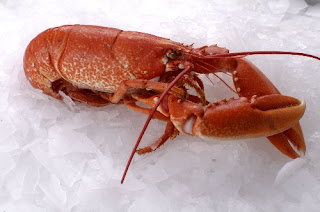SIGNS OF SPRING!!!
Site One:)
If you look close enough, you are able to see a green flower and that is a flower of a blackberry bush. Pretty much any type of berry bush, before they bud berries, they bloom flowers. So this means that there should be blackberries budding soon. While I was observing the blackberry bush, I heard my fellow classmates and the chirping of far away birds. The wind wasn't blowing at that time so I felt the heat of the warm sun on my face.
My camera on my phone isn't good enough to zoom in close enough to see the buds, but at the top of all these branches are little pink buds; the buds for Spring leaves. I heard birds all around, in all distances, and people chattering.

I know that this might look like Poison Ivy, but it is actually
Honeysuckle leaves! This is one of my favorite pictures because I love Honeysuckles! They smell so good and taste so sweet! You couldn't smell honeysuckles yet because they haven't bloomed quite yet, but I heard the wind blowing through the trees and birds singing.
SIGNS OF SPRING!!
SITE TWO:)!
While the class and I was walking round the pond, I came upon these long dankly things(above picture); they are alder catkins! They produce pollen, but the pollen has not yet formed on them. They provide food for insects and bees and they distribute seeds. The weather was 43 degrees but it felt like it was 35. I heard the trees blowing in the winds and some of my classmates talking.
SIGNS OF SPRING!!
Site Three:)
It is a little blurry, but this is a picture of a green bud. I took this picture while I was walking around the other side of the pond. I don't know how long it has been a bud, but I am just so Excited to see that Spring is literally in the air! I cannot wait until it is officially Spring! I heard the crunching of leaves around me and I could feel the sun and a cool light breeze.

Sorry if this picture is really blurry, I tried; but anyways this is a picture of red buds. There is something unique about this red bud and it is that you can actually see the Springs growth. If you look you can see the brown stem, that is last years growth, and the long red stems is this years! It's growing so quickly! I thought it was really neat to be able to see the new growth. While I was observing this, I heard the smashing of leaves and I felt the light cool breeze and sun.
SITE FOUR!
This is a picture of a really pretty unique flower buds. I took this picture right next to the creek, walking on my way back to the school. These are my favorite of all the buds that I saw because they actually looked like flowers. I could feel the sun and hear the patter of feel, passing cars and buses, and people talking.













